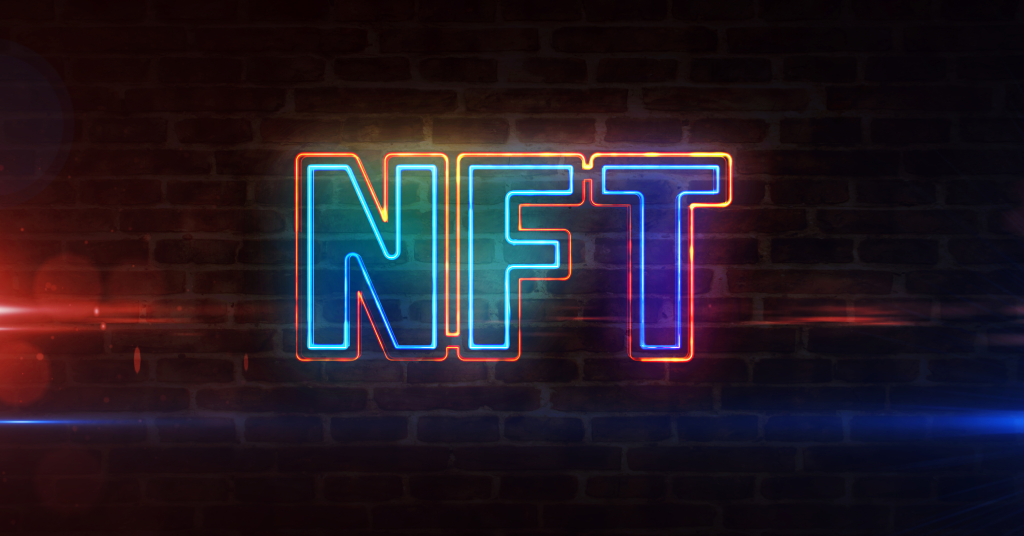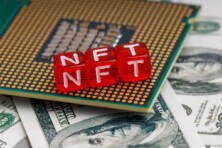Here is a brief guide on creating your NFT collection

Better late than never: how to create your NFT collection? Source: depositphotos.com
The NFT market may have already experienced its biggest growth, but it remains pretty stable. Moreover, blockchain-based NFTs have lately become a powerful fundraising vehicle for nonprofits and charities. It’s definitely not the time to lose this innovative way to help those in need in these challenging times. As long as the sales volume and active user counts aren’t flatlining, there’s still a chance to jump on the wagon.
Develop an idea
In order to create an NFT collection, you must possess some level of talent and have dedicated software tools installed. For instance, to draw a digital picture or create game skins, you’ll probably need a pen tablet and some type of illustration/editing software like Clip Studio Paint, Paint Tool SAI, VtfEdit, GIMP, or Photoshop. Choose a common theme that will unite separate NFTs into a single collection. Decide which rare qualities some of your NFTs may have. Think about the utility of the proposed collectable items. Some creators provide the buyer with a physical piece of art that matches the purchased NFT. It could also be an autograph, unique merchandise, special access to an event, exclusive in-person memberships, or future use in the digital world (like gaming or metaverse). These utility features probably won’t be attached to all the collection pieces, but your collection may as well have a “gem” in it.
Choose the platform
For starters, you should determine which marketplace you prefer to display and list your NFT collection for sale. The trick is that different trading platforms work on different blockchains, so your next steps depend on the chosen outlet. Some popular choices include Opensea, SpaceSeven, Rarible, Bakeryswap, SuperRare, Nifty Gateway, and Mintable. Since Ethereum has the largest NFT ecosystem, most marketplaces function on that blockchain. However, Binance Smart Chain is also gaining popularity with DeFi and DApps. Thus, several NFT marketplaces support BSC as well. Moreover, some platforms like OpenSea support NFT trading across multiple blockchains (Ethereum, Polygon, Klaytn, and Solana).
Deal with the financials
Whatever the blockchain you choose, some kind of cryptocurrency will be required to create an NFT there. Ethereum uses ETH, Polygon supports MATIC, ETH, USDC and DAI, Klaytn offers KLAY, and Solana utilises SOL. If you prefer BakerySwap, which functions on BSC, prepare to buy some BEP20 BNB first. The bottom line is – you need to buy some crypto and link the trusted crypto wallet to the chosen NFT marketplace platform. MetaMask is, by far, the most popular choice which is supported by most platforms.
Start creating
If you stick to the biggest NFT marketplace, Opensea, please bear in mind that the Solana blockchain is still in beta testing there, so it has limited collection coverage. Ethereum charges certain gas fees which don’t depend on Opensea, but you can trade NFTs gas-free if you bridge your collection to Polygon. Klaytn offers an opportunity to build NFTs for the metaverse. Weigh up all the benefits and downsides and choose the appropriate blockchain.
Now, let’s get more technical.
If you use a desktop version, there’s a “Create” button on the top toolbar. Click it and follow the instructions. Alternatively, you may open your “Account” dropdown menu and access “My Collections”.
Next, you’ll get an option to “Create a collection”. Add your collection logo, description, banner, and social media links. Set your royalties on primary or secondary sales. To do the latter, adjust the percentage fee field in your collection editor. You can set a fee of up to 10%. Then specify the payout address where you wish to receive the royalty fees. Choose which currencies (including social tokens) you want to allow in your store.
You can also select which blockchain to create NFTs on by default. Click on the dropdown menu and select one.
Now that your collection has been created, you can add an NFT by pressing the blue “Add item” button in the top-right corner.
Your NFT may be an image, video, audio, or 3D model. Upload the supported file type and give it a name. The maximum file size is 40MB.
Proceed with the next pop-up windows to customise your NFT.
On most marketplaces, you have the option to include special characteristics and properties to specify the scarcity and uniqueness of your NFT.
Creators can add unlockable content that will be visible exclusively to the purchaser. This can be anything from passwords required to access certain additional services to file changes, discount codes and contact information. This content helps to add value to your NFT. Artwork variations may also be hidden in this unlockable section. For instance, one of the most expensive NFTs up-to-date – Beeple’s “Crossroads” – was created in two variants depending on the results of the upcoming presidential election. The person buying the piece did not know what the final artwork would be.
OpenSea also facilitates NFT sales that involve a legal transfer of physical goods or rights, so you may add a description file and provide additional details of the real-world object on sale via the asset’s unlockable content section.
Collection items may be labelled as explicit or sensitive content so that it caters to the appropriate audience categories.
Freezing your metadata option will permanently lock and store the item name, media type (JPG, PNG, GIF, SVG, MP4, WEBM, MP3, WAV, OGG, GLB, GLTF), description, properties, levels, and stats of the item on decentralised file storage. Once frozen, your content cannot be edited or removed. Your NFT will forever be safely stored and will never be lost or missing. Adding an unlockable item isn’t generally available so it doesn’t get “frozen”. Gas fees apply for this service.
Authors can make some collection items 100% unique or mark them as “semi-fungible” on Polygon. By increasing the “Supply” of your NFT, you can increase the number of copies that can be minted. This means your item can be owned by multiple wallets.
When all the details are filled in, press the “Create” button at the bottom.
In the process of creation, some messages in your Ethereum wallet may appear. Sign them digitally to prove you own the wallet address.
NFTs created on OpenSea will be visible on other platforms only after the NFTs have been purchased or transferred since they aren’t actually ‘minted’ onto the blockchain until they are purchased or sent to another wallet.
SEE ALSO:









